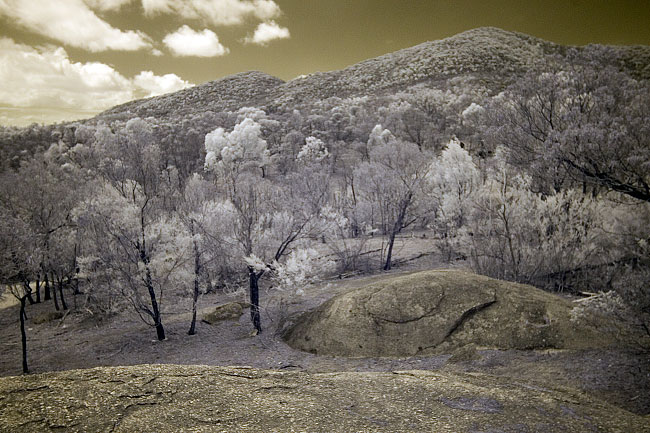Concluding our exploration of Layers, Gaussian Blur and Blending Modes, Part 4 explores the topic of when and why you might choose to use this approach.

Before:
Over the last three articles we have explored various ways to create a particular look and how do we do it. In this, last, article, I want to explore the much more important question of why would we use it. I will also show a body of work I am in the process of creating using this technique.
Before:
After:
I always try to work from the point of view that the image comes first, the focus being what do I want to say with the piece, and then the secondary question is how do I achieve it, rather than to focus on the technique first.
Before:
After:
So, firstly, we need to work out what this technique, and its variations, can achieve with an image? To me, they are:
* A shifting of tonality as the highlights and shadows are spread by the blurring
* A general blocking up of both highlight and shadow detail
* An increase in contrast
* The creation of glows through the blurring
All of these can apply to the whole image, or part through masking, and you can limit the effect to just highlight or just shadow through one of the variant techniques.
Before:
After:
So, given the above, what can we be trying to achieve with an image that we can do using this technique? Some that come to mind are:
* Change the lighting, to a late evening look, for example
* Create mystery through deepening of shadows and reduction of detail
* Give skin a healthy glow and reduce blemishes
* Create a slight haze look
* Age an image so that it appears to have been made in the past with less well corrected equipment
* Recreate certain styles of photography, such as the Hollywood portrait look of the 20’s through 50’s
* Give an image a disturbing or scary feeling
* Give an image an airy and light feeling (see how it can swing both ways depending on blending mode used)
* Symbolize a dream or memory state
* Simulate the halation glow of film infrared
And there are probably many more that you can think of that I am just brain dead about at the moment.
Before:
After:
Should you use this effect? Well, my view is that if it gives you the result you want, definitely. So much of what you can do with this approach is an alternative way of doing what you could in camera or in the darkroom. So in that sense it is part of a long tradition in photography. Besides, in my view there is nothing natural in photography, so why not go for it?
Before:
After:
Personally I use this technique for the following things: adding mystery to an image, changing the apparent time of day and lighting, and to create a different IR effect than my camera gives me straight up. I also find it very effective, personally, for adding power and sometimes a sense of uncertainty and foreboding to an image.
Before:
After:
So if you are looking to achieve any of the above, or any of the previously discussed possible uses, I’d encourage you to give it a go.
Below is a body of work I am creating using this approach. I would not normally show work in progress that I was preparing for exhibition but I decided to here to illustrate the use of a perticular technique across a body of work. They are shown as before and after. The first image in the this article fits in this series.











